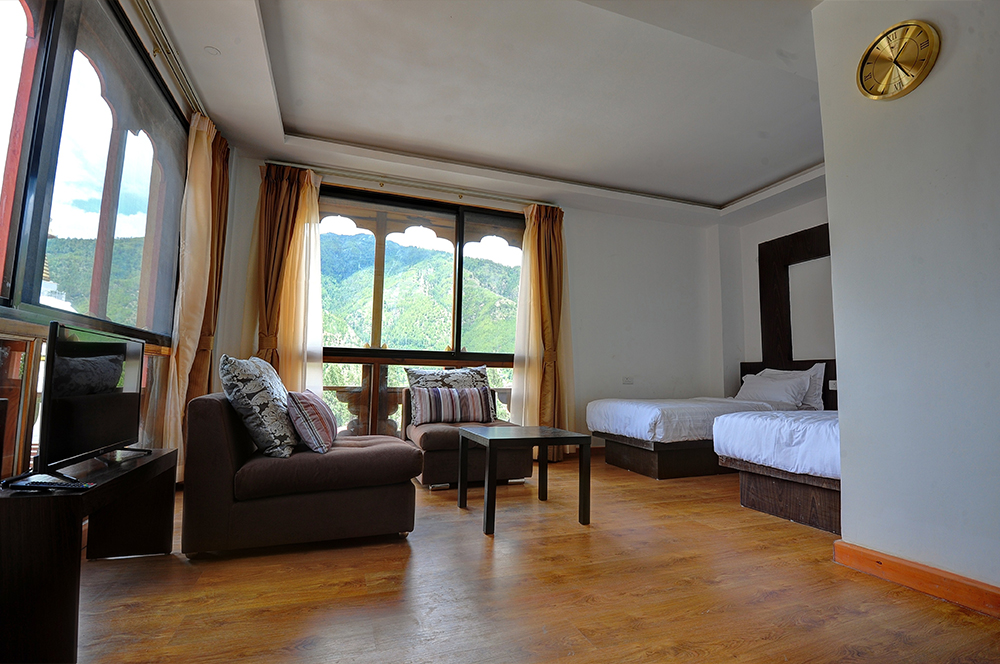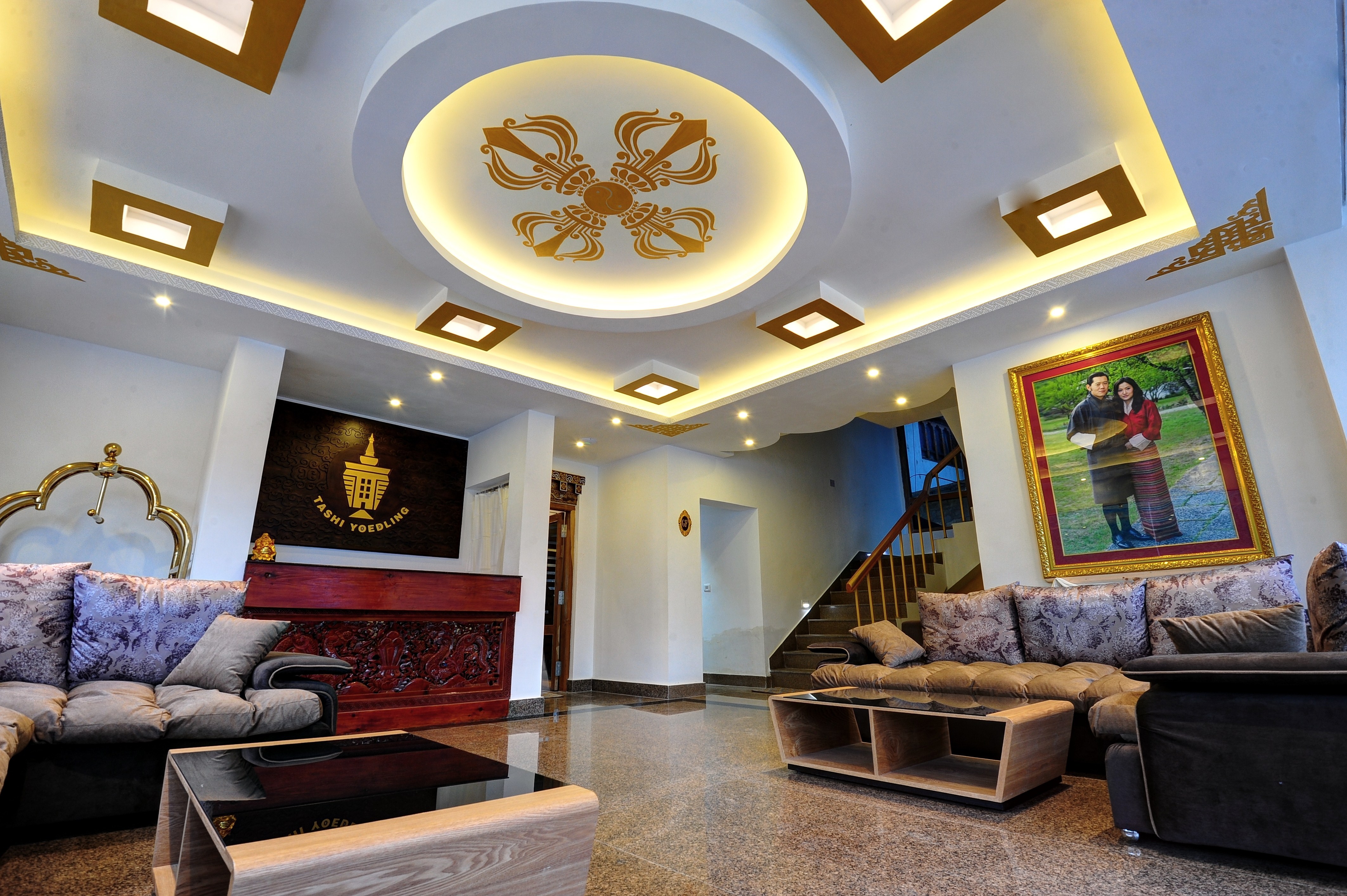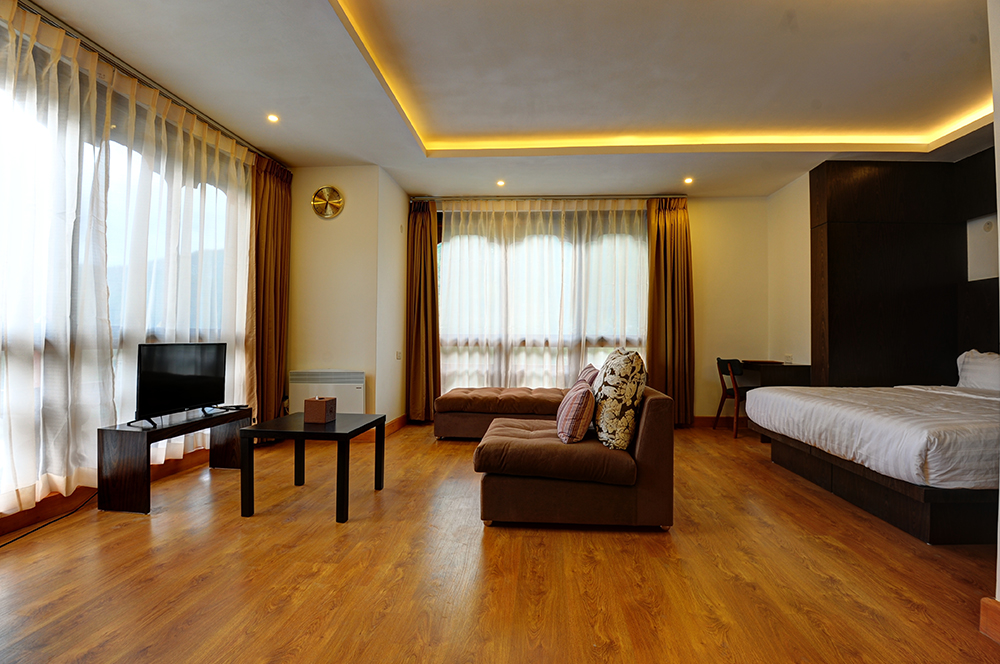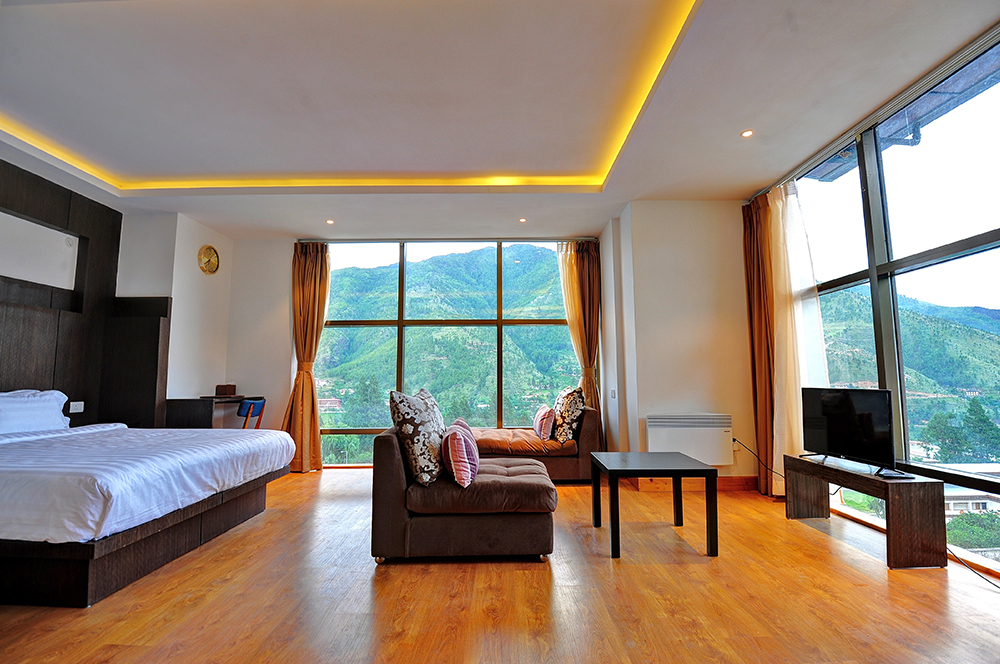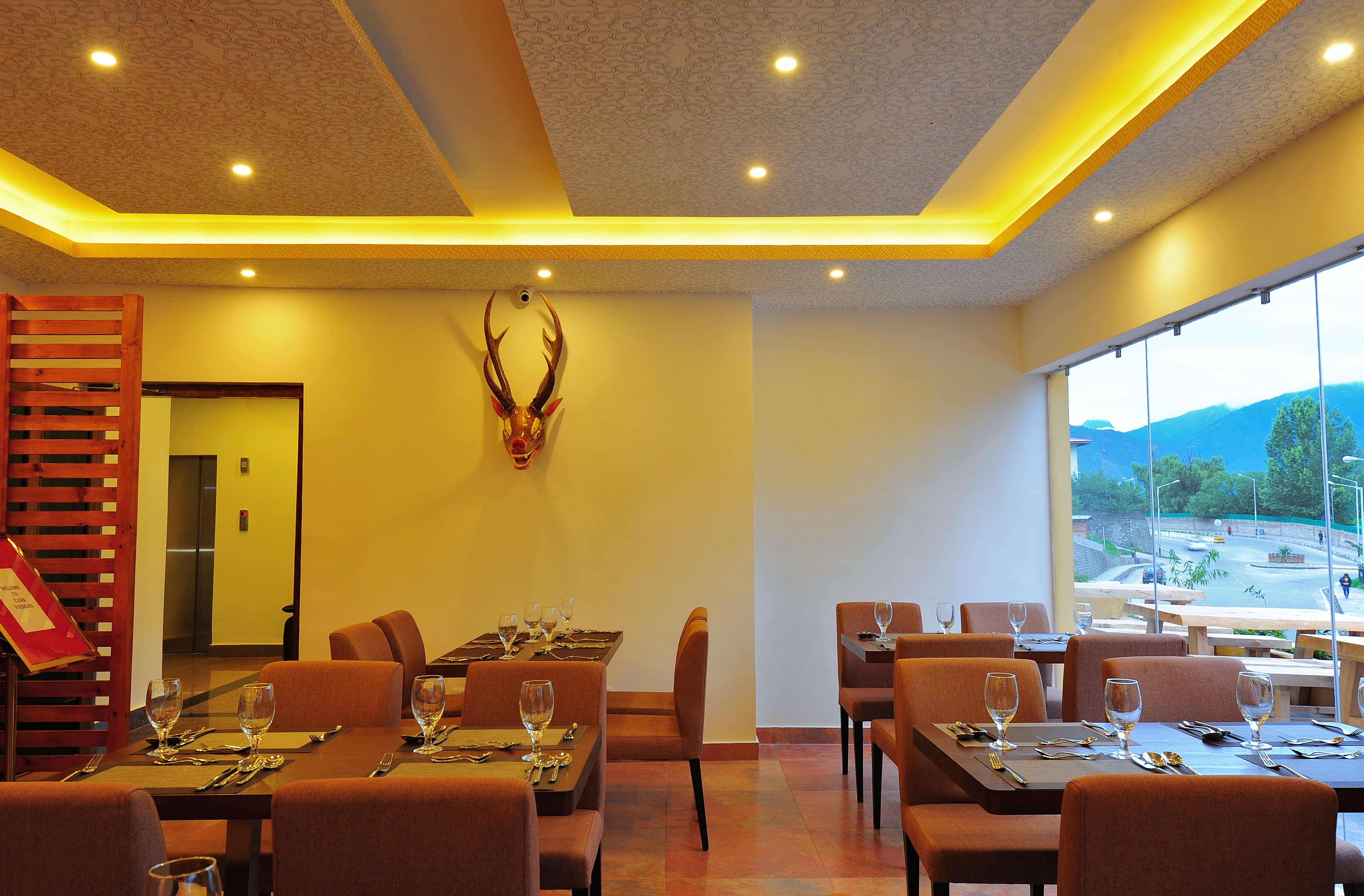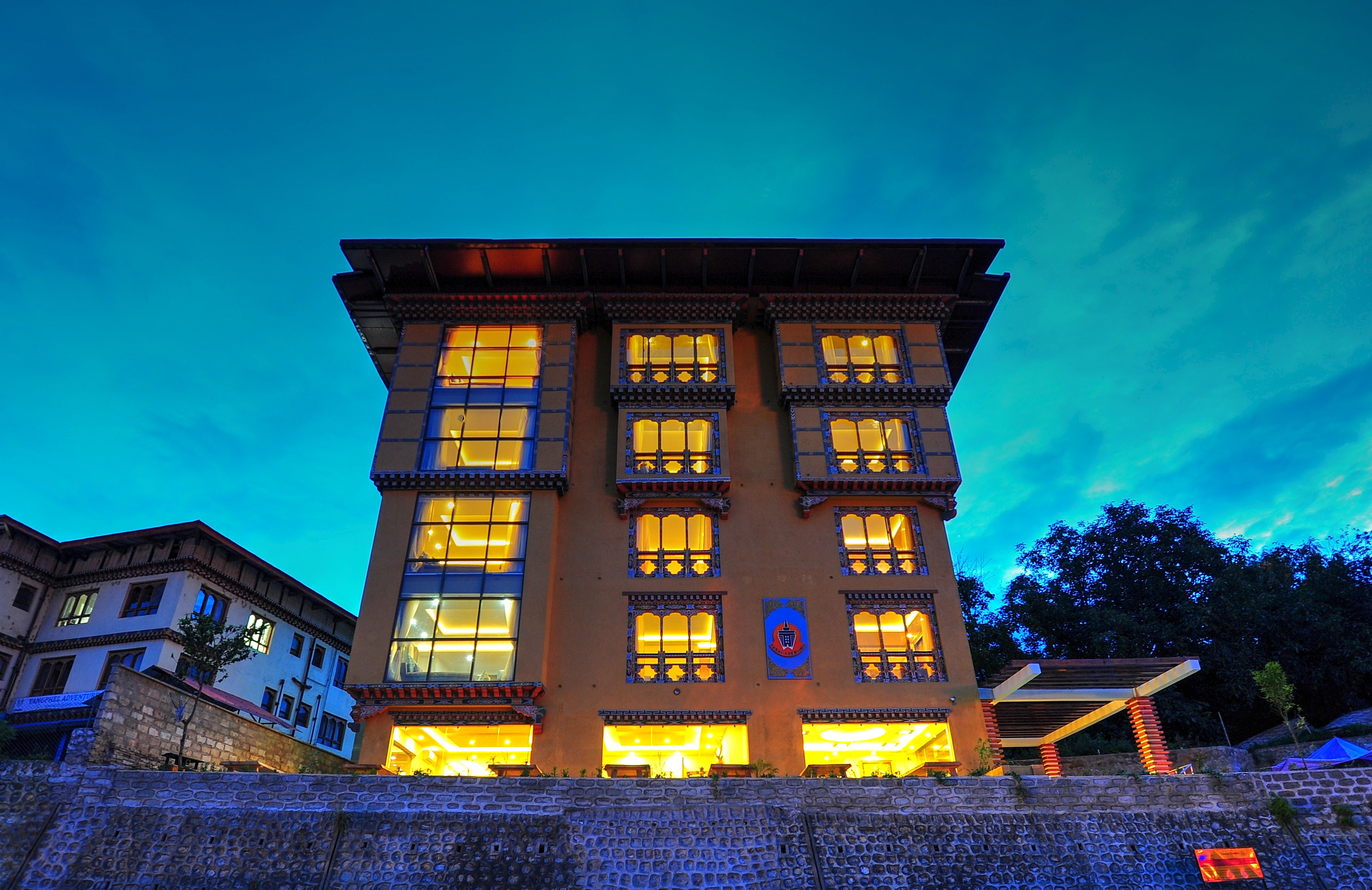Tashi Chhodzong
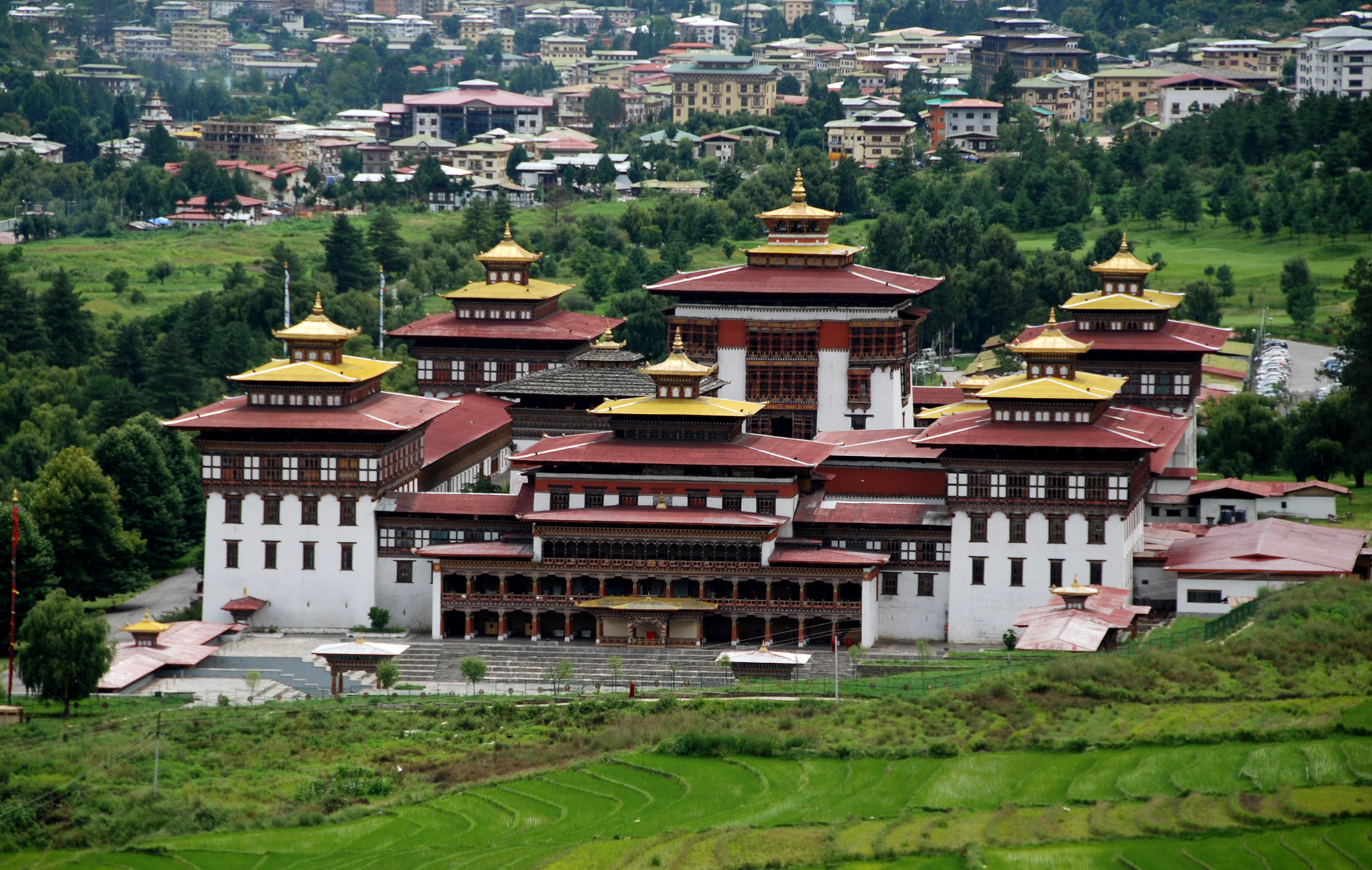
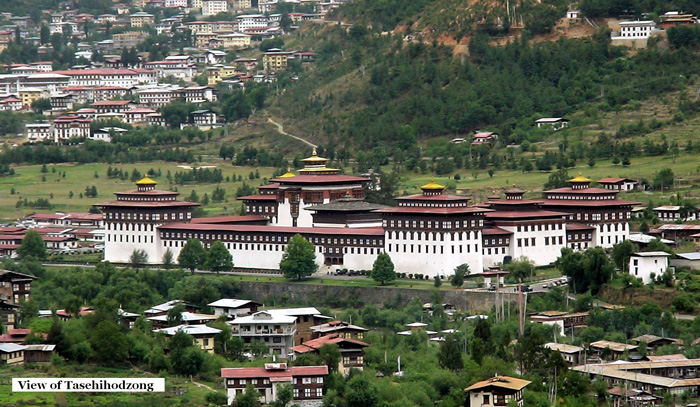
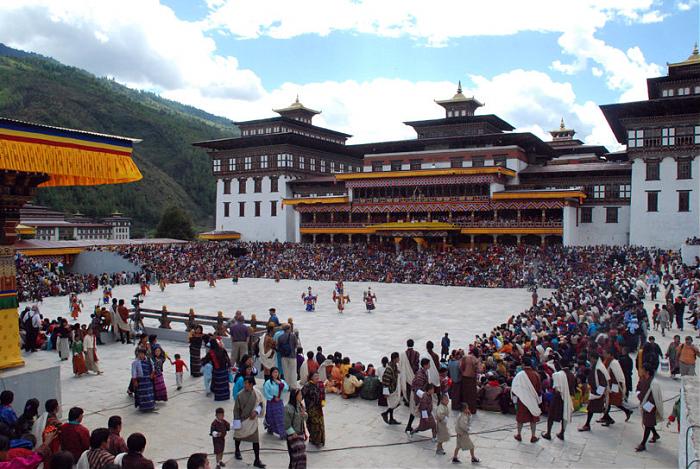
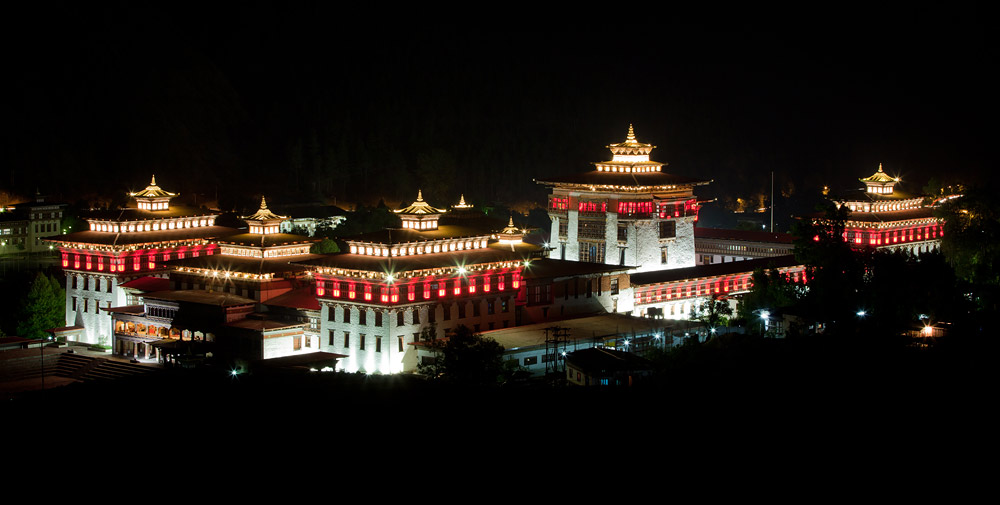
This splendid dzong, north of the city on the west bank of the Wang Chhu, seems to fit seamlessly into the valley, lending the city both regal splendour and monastic weight. The dzong was the site of the lavish formal coronation of the fifth king in 2008 and hosts the city’s biggest annual bash, the colourful tsechu festivities.
The building you see is actually not the original Thimphu dzong. In 1216 Lama Gyalwa Lhanangpa built Dho-Ngen Dzong (Blue Stone Dzong) on the hill above Thimphu where Dechen Phodrang now stands. A few years later Lama Phajo Drukgom Shigpo, who brought the Drukpa Kagyu lineage to Bhutan, took over the dzong. In 1641 the Zhabdrung acquired the dzong from the descendants of Lama Phajo and renamed it Trashi Chhoe Dzong (Fortress of the Glorious Religion). He arranged to house both monks and civil officials in the dzong, but it was too small so he built another dzong lower down in the valley for the civil officials. The 13th Druk Desi, Chhogyel Sherab Wangchuck (1744–63), later enlarged Trashi Chhoe Dzong so that it could again accommodate both civil officials and monks.
The original upper dzong was destroyed by fire in 1771 and was abandoned in favour of the lower dzong, which was expanded. That dzong itself suffered a fire in 1866, and twice again since then. The five-storey utse (central tower) was damaged in the 1897 earthquake and rebuilt in 1902.
When he moved the capital to Thimphu in 1962, King Jigme Dorji Wangchuck began a five-year project to renovate and enlarge the dzong. The royal architect performed the repairs without touching the utse, Lhakhang Sarpa (New Temple) or any other of its chapels at the centre. Other than these structures, the entire dzong was rebuilt in traditional fashion, without nails or architectural plans. The dzong once housed the National Assembly and now houses the secretariat, the throne room, and offices of the king and the ministries of home affairs and finance.
The dzong’s whitewashed two-storey outer structure has three-storey towers at the four corners projecting out over the walls and capped by red-and-gold, triple-tiered roofs. There are two main entrances on its eastern side. The southern entrance leads to the administrative section (off-limits to visitors), while the northern leads to the monastic quarter, the summer residence of the dratshang (central monk body).
Entering the dzong from the northeast entrance you are greeted by the four guardian kings, while the steps are flanked by images of Drukpa Kunley, Thangtong Gyelpo and Togden Pajo with consort. Upon entering the dochey (courtyard) it’s hard not to be impressed by the splendid proportions of the architecture, the enclosed silence broken only by the flight of pigeons, the shuffle of feet and the whirr of prayer wheels. A large utse separates the northern monastic courtyard and its Lhakhang Sarpa from the southern administrative courtyard. The northern assembly hall houses a large statue of Sakyamuni (the historical Buddha) and the thrones of the current king, past king and Je Khenpo. Look to the ceiling for fine painted mandalas.
It is sometimes possible to enter the utse . If you’re allowed in, look for the 3rd-floor funeral chorten of the 69th Je Khenpo, where pilgrims receive the blessing of betel nut from his nut container. If this intrigues you, head next door to visit the toilet of the Zhabdrung in his former living room.
Northeast of the dzong is an excellent example of a traditional cantilever bridge. To the southeast is the unassuming residence of the current king, while across the river you can see the impressive SAARC building , which houses the National Assembly. The small Neykhang Lhakhang, west of the dzong, houses the local protective deities Gyenyen Jagpa Melen and Dorji Daktshen, and is off-limits to visitors. The large open-air courtyard on the north side of the dzong hosts the dances of the annual tsechu festival in September. The dzong’s huge Sangay Tsokhorsum Thondrol (a painted/embroidered religious picture) is unfurled here at the climax of the tsechu.
Address
Doebum Lam
Post Box # 336, Thimphu
Bhutan
Phone: +975 (02) 338 134 / (02) 338 135 / 77212821 (General Manager)
© 2024 Tashi Yoedling

